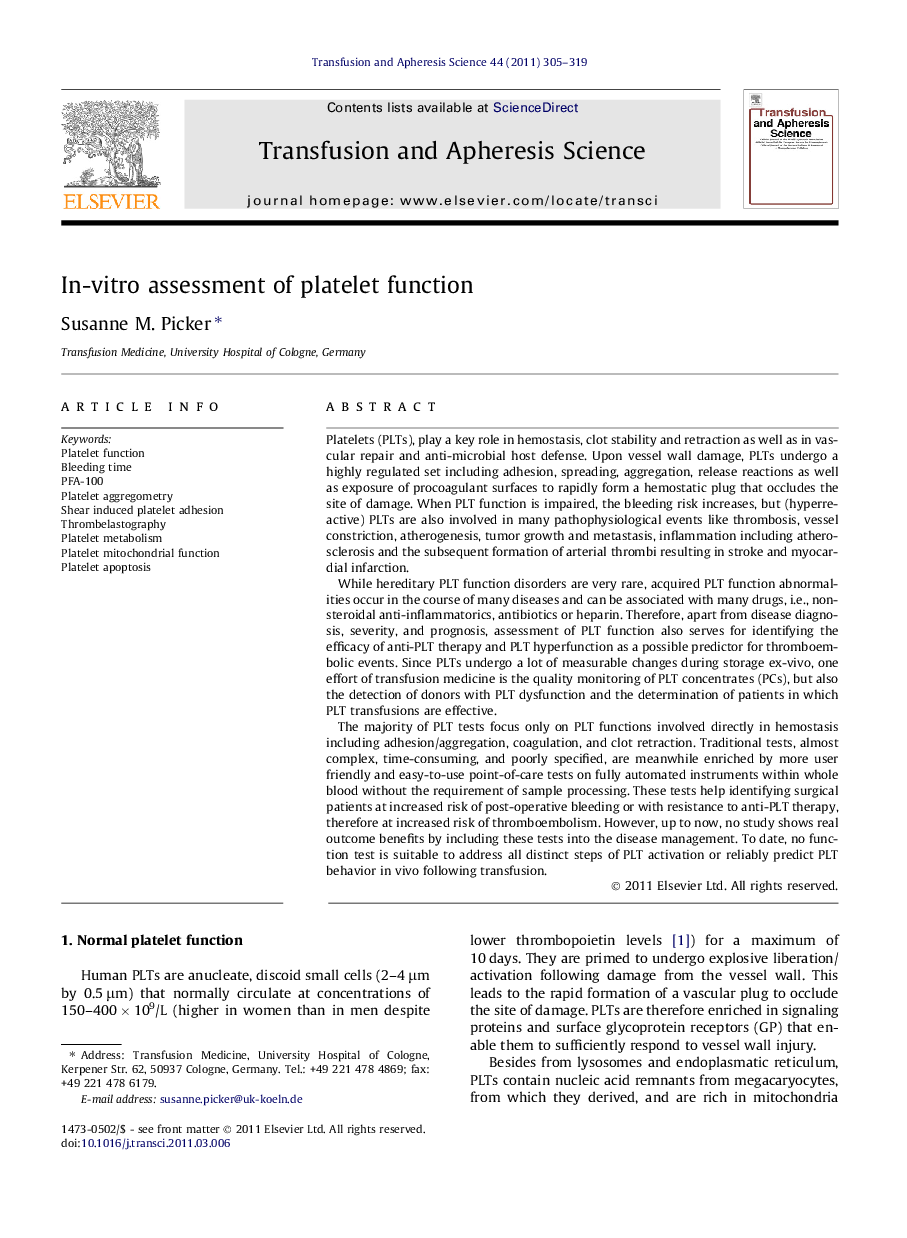| کد مقاله | کد نشریه | سال انتشار | مقاله انگلیسی | نسخه تمام متن |
|---|---|---|---|---|
| 3335660 | 1213538 | 2011 | 15 صفحه PDF | دانلود رایگان |

Platelets (PLTs), play a key role in hemostasis, clot stability and retraction as well as in vascular repair and anti-microbial host defense. Upon vessel wall damage, PLTs undergo a highly regulated set including adhesion, spreading, aggregation, release reactions as well as exposure of procoagulant surfaces to rapidly form a hemostatic plug that occludes the site of damage. When PLT function is impaired, the bleeding risk increases, but (hyperreactive) PLTs are also involved in many pathophysiological events like thrombosis, vessel constriction, atherogenesis, tumor growth and metastasis, inflammation including atherosclerosis and the subsequent formation of arterial thrombi resulting in stroke and myocardial infarction.While hereditary PLT function disorders are very rare, acquired PLT function abnormalities occur in the course of many diseases and can be associated with many drugs, i.e., non-steroidal anti-inflammatorics, antibiotics or heparin. Therefore, apart from disease diagnosis, severity, and prognosis, assessment of PLT function also serves for identifying the efficacy of anti-PLT therapy and PLT hyperfunction as a possible predictor for thromboembolic events. Since PLTs undergo a lot of measurable changes during storage ex-vivo, one effort of transfusion medicine is the quality monitoring of PLT concentrates (PCs), but also the detection of donors with PLT dysfunction and the determination of patients in which PLT transfusions are effective.The majority of PLT tests focus only on PLT functions involved directly in hemostasis including adhesion/aggregation, coagulation, and clot retraction. Traditional tests, almost complex, time-consuming, and poorly specified, are meanwhile enriched by more user friendly and easy-to-use point-of-care tests on fully automated instruments within whole blood without the requirement of sample processing. These tests help identifying surgical patients at increased risk of post-operative bleeding or with resistance to anti-PLT therapy, therefore at increased risk of thromboembolism. However, up to now, no study shows real outcome benefits by including these tests into the disease management. To date, no function test is suitable to address all distinct steps of PLT activation or reliably predict PLT behavior in vivo following transfusion.
Journal: Transfusion and Apheresis Science - Volume 44, Issue 3, June 2011, Pages 305–319